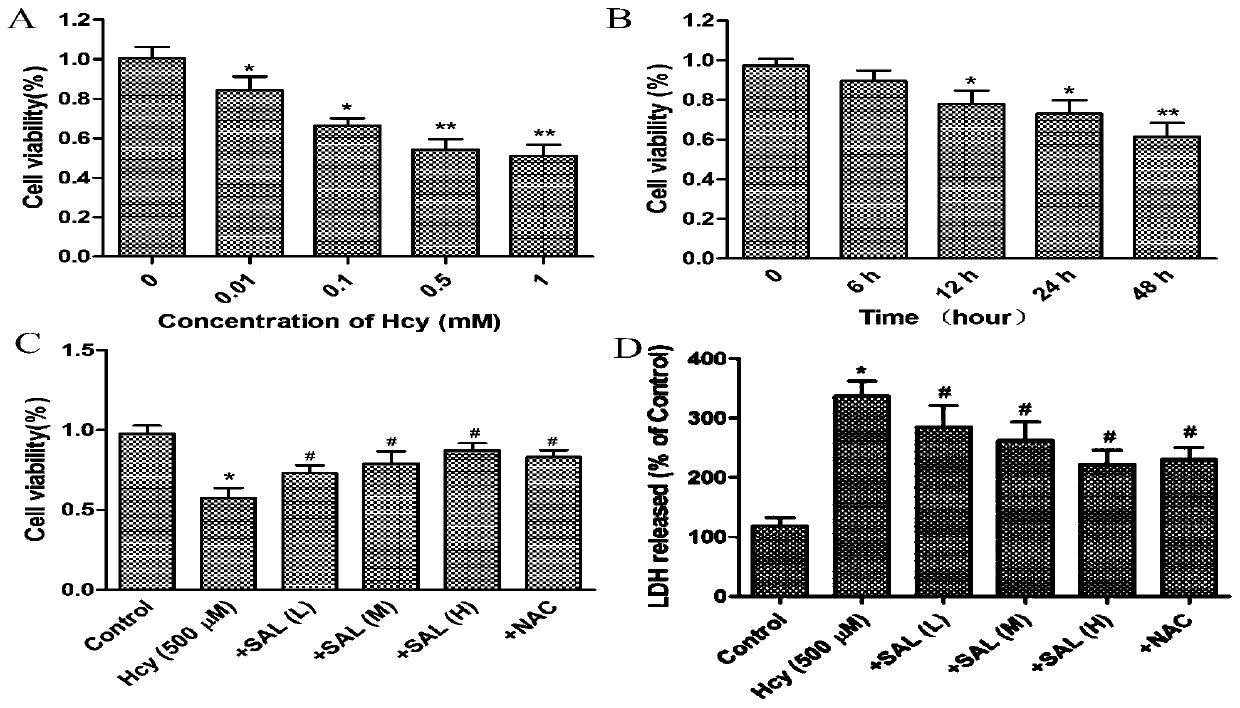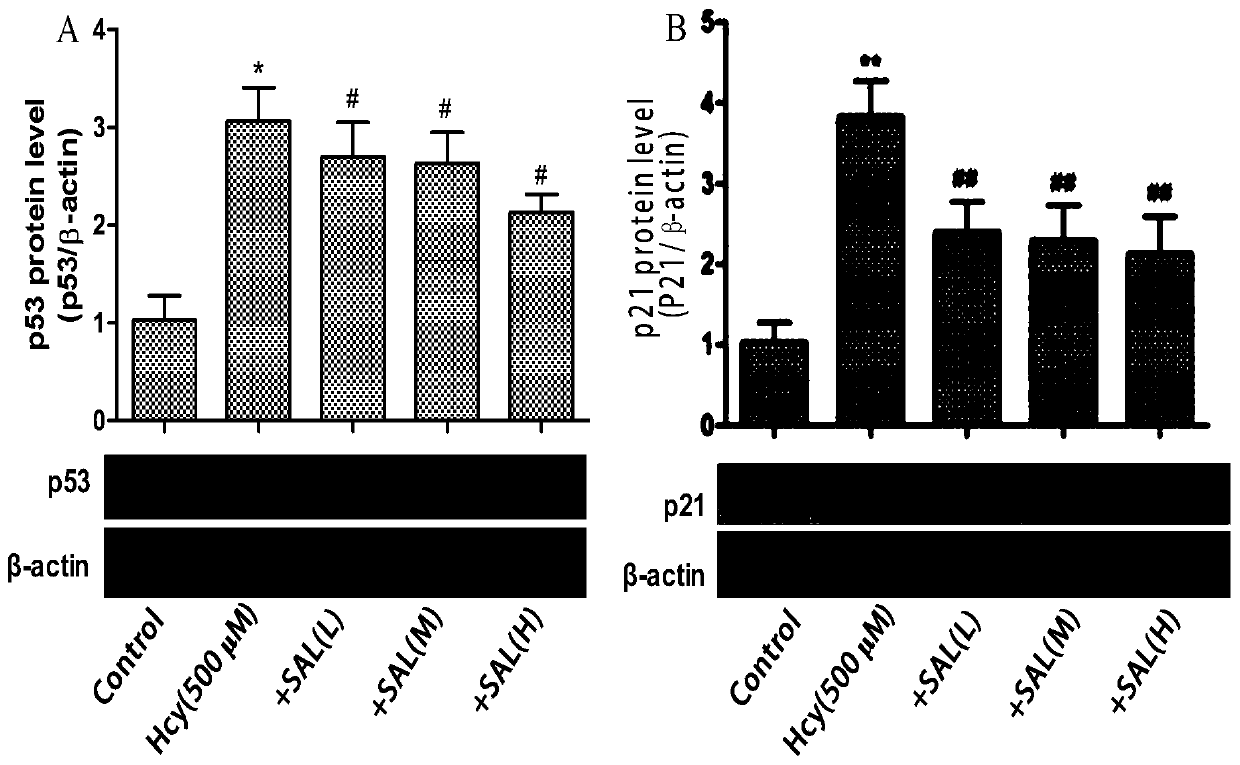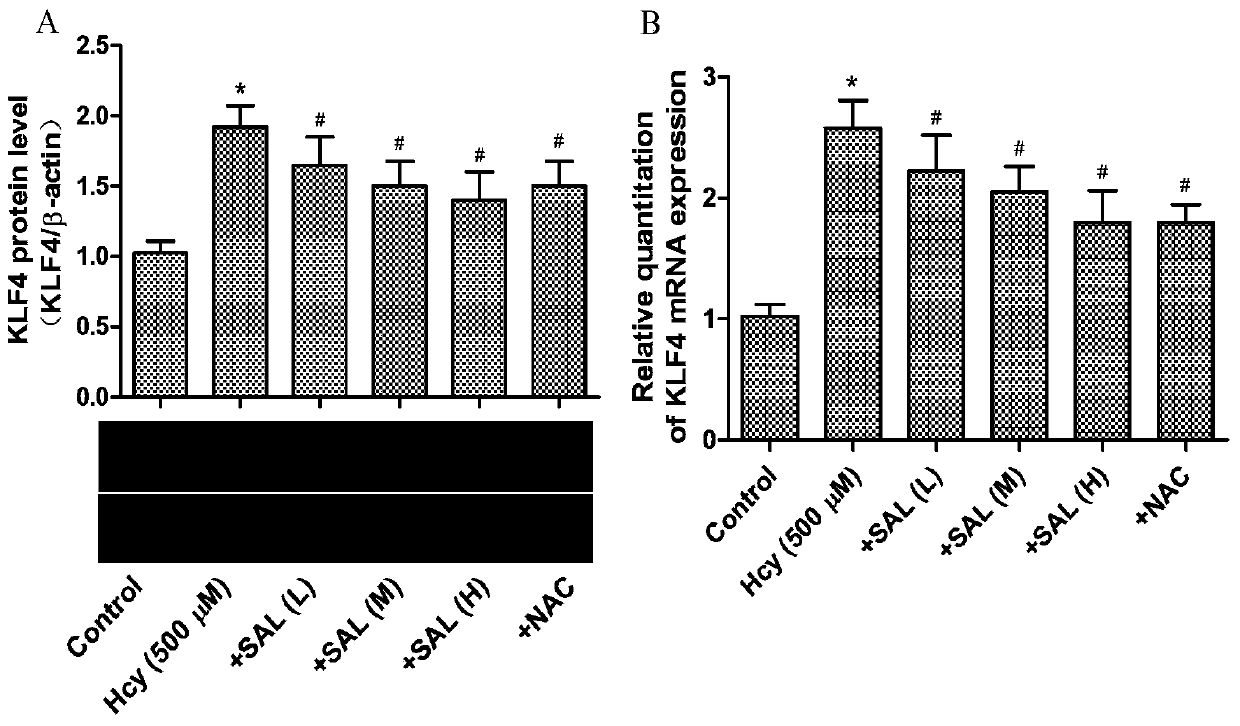Application of KLF4-based salidroside to resisting vascular endothelial cell senescence
A technology for endothelial cells and salidroside, which is applied in the field of medical inventions to achieve the effects of increasing the level of reactive oxygen species, accelerating the aging process of endothelial cells, and consistent results of fluorescence intensity detection and statistics.
- Summary
- Abstract
- Description
- Claims
- Application Information
AI Technical Summary
Problems solved by technology
Method used
Image
Examples
Embodiment 1
[0051] Embodiment 1 Materials and methods
[0052] Isolation, culture and passage of human umbilical vein endothelial cells
[0053] Human umbilical vein endothelial cells (Human Umbilical Vein Endothelial Cells, HUVECs) were purchased from SCIENCELL, USA. After the endothelial cells were thawed and recovered, they were transferred into cell culture flasks under aseptic conditions, and culture medium containing neonatal calf serum was added and placed in a 37°C, 5% CO2 incubator for static adherent culture. The culture medium was changed every 2 days, and when the cells grew to confluence, they were digested and passaged with 0.25% trypsin. Take 4-6 generations of subconfluent cells. Dilute the cells to 1×10 with low-glucose DMEM medium containing 10% calf serum 5 Cells / ml, and then 2ml / well of the cells were seeded into a 6-well culture plate, and after the cells grew and fused, the culture medium with different conditions was used for experiments.
[0054] Experimental D...
Embodiment 2
[0171] The measurement of embodiment 2 cell viability
[0172] In order to determine the optimal concentration and time of the drug acting on the cells, the cell viability was detected by the MTT method. Homocysteine (Hcy) 500μM acted on endothelial cells for 48 hours, and the cell viability was significantly reduced ( figure 1 A, B). After treatment with different doses of salidroside and positive drugs, the cell viability was significantly improved ( figure 1 C). The LDH leakage test was used to detect the degree of cell membrane damage. After Hcy was treated for 48 hours, the leakage of LDH increased significantly, and the leakage of salidroside could be reduced to varying degrees ( figure 1 D), showing that salidroside has a certain protective effect on endothelial cell damage caused by Hcy.
Embodiment 3
[0173] Example 3 Determination of Intracellular Active Oxygen Levels
[0174] Under the action of various stimulating factors and various pathological conditions, a large number of oxygen free radicals are produced in the body, and the content of active oxygen increases, forming a state of oxidative stress. Endothelial cells are exposed to high concentrations of oxidative stress conditions for a long time, which eventually leads to damage and dysfunction. To evaluate the inhibitory effect of salidroside on the Hcy-induced increase in ROS levels, DCFH-DA fluorescent probe was used to detect ROS levels in endothelial cells. Hcy stimulated endothelial cells for 48 hours, the level of reactive oxygen species was significantly increased, and the level of reactive oxygen species was significantly reduced after drug treatment ( figure 2 A). The statistical results of fluorescence intensity detection were consistent ( figure 2 B).
PUM
 Login to View More
Login to View More Abstract
Description
Claims
Application Information
 Login to View More
Login to View More - R&D
- Intellectual Property
- Life Sciences
- Materials
- Tech Scout
- Unparalleled Data Quality
- Higher Quality Content
- 60% Fewer Hallucinations
Browse by: Latest US Patents, China's latest patents, Technical Efficacy Thesaurus, Application Domain, Technology Topic, Popular Technical Reports.
© 2025 PatSnap. All rights reserved.Legal|Privacy policy|Modern Slavery Act Transparency Statement|Sitemap|About US| Contact US: help@patsnap.com



